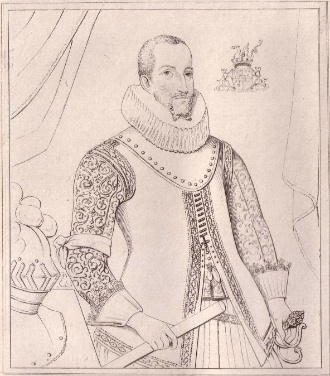|

The Earls of Winton
The original line of the Lord's Seton
devolved upon the 2nd son of George, 7th Lord Seton. The
eldest son, George, Master of Seton was greatly involved in his
father's affairs and had been part of the events of Queen Mary's
troubled reign, and that of the early years of her son, King James
VI. It was natural that he should succeed his father, however,
George, Master of Seton predeceased his father and thus his
brother Robert became heir to the Seton Honours. In
1582, Robert, 8th Lord Seton, as he then was, married Margaret Montgomerie, oldest daughter of Hugh, third Earl of Eglinton, by
whom he had five sons and a daughter.
His son and heir,
Robert, became 2nd Earl of Winton, but resigned the title to his
brother George, who was the celebrated 3rd Earl
His 3rd son,
Sir Alexander Seton of Foulstruther,
succeeded as sixth Earl of Eglinton by right of descent from his
mother and which arrangement was negotiated with the Earl of
Eglinton to continue the line in bearing the name of Montgomerie,
and in descent from whom is the present Earl of Eglinton and
Winton, Lord Montgomerie, Ardrossan, Baron Seton and Tranent, etc.
On the death of his father, George, 7th Lord Seton, in 1586,
Robert succeeded as 8th Lord Seton. Although his father left
the estates heavily encumbered by reason of the great expense of
several embassies and of his losses suffered by adhering to the
Queen’s party, yet by prudence and ability he was soon able to put
his affairs in good condition and provide both sons and daughters
with respectable fortunes. “He was very hospitable, and kept a
noble house, the king and queen being frequently there, and all
French and other ambassadors and strangers of quality were nobly
entertained.” He was a favorite with the king, and was created
Earl of Winton with solemnity and pomp of banners, standards, and
pennons, inscribed with loyal mottos and quaint devices at Holyrood House, on the 16th of November, 1600. He was
a great builder and a wise improver of his property, especially by
working on the old harbor of Cockenzie, along the Firth of Forth,
a curious fishing village of great antiquity whose history is
little known. It originally sheltered only small boats, but when
improved by art and accommodated vessels of a larger size. In
January, 1599, the king granted him a charter under the Great Seal
of Scotland concerning Cockenzie.
| 

